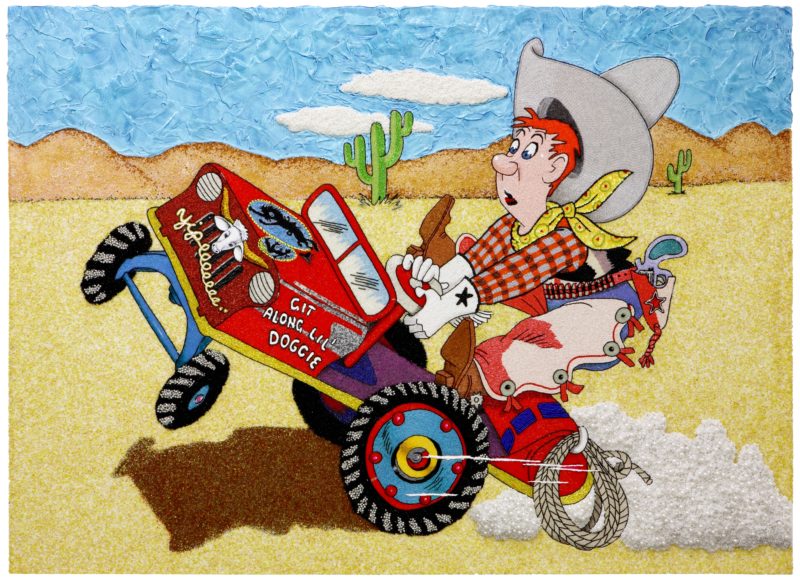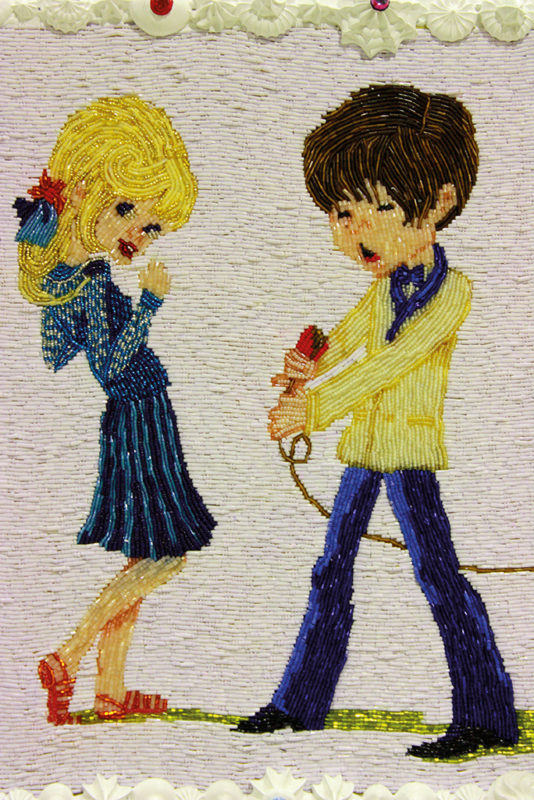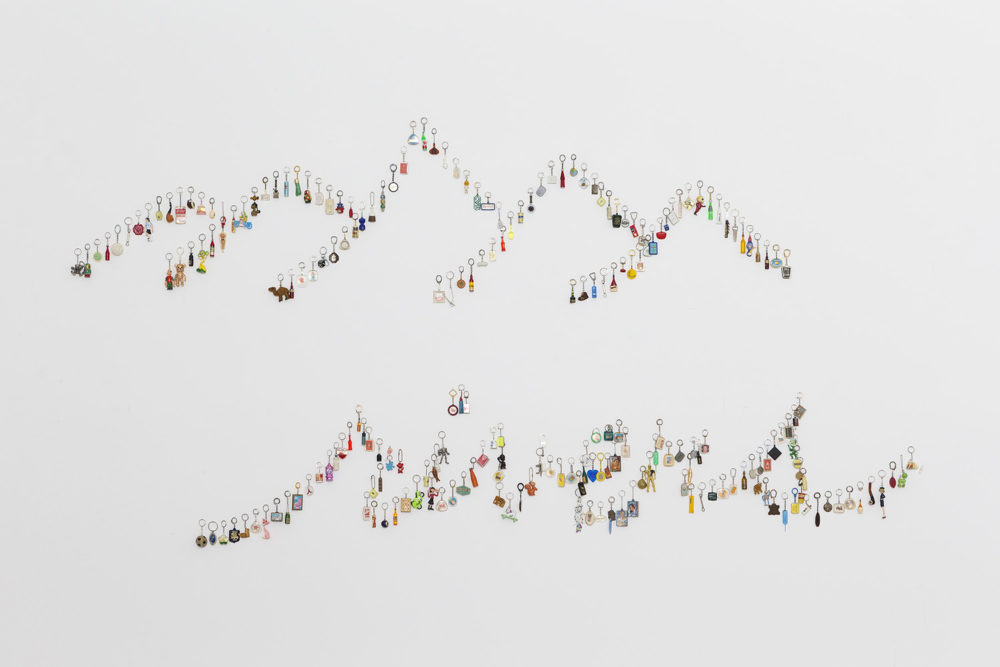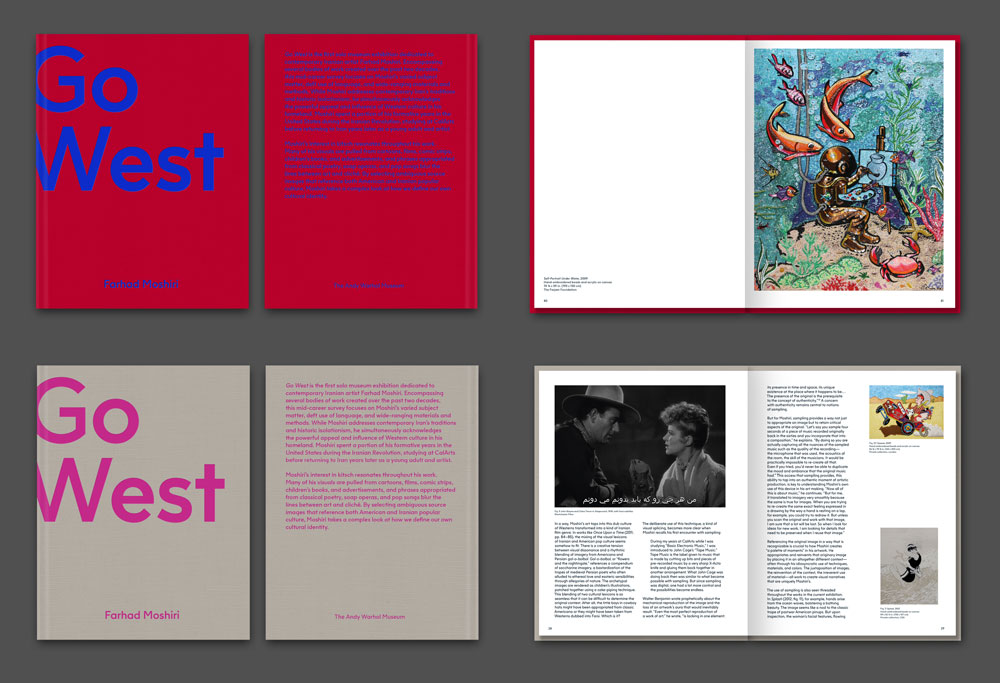Go West is the first solo museum exhibition of Iranian artist Farhad Moshiri.
Moshiri’s interest in Pop art and kitsch resonates throughout his work. Many of his visuals are pulled from cartoons, films, comic strips, children’s books, and advertisements, while phrases appropriated from classical poetry, soap operas, and pop songs blur the lines between art and cliché. By selecting ambiguous source images that reference both American and Iranian popular culture, Moshiri takes a complex look at how we define our own cultural identity.

Farhad Moshiri, Yipeeee, 2009, Hand embroidered beads and acrylic on canvas, Private Collection
Moshiri was first introduced to American films at his father’s local movie theater. He watched movies such as John Wayne’s Stagecoach (1939) dubbed in Farsi. In classic Westerns, the American landscape was presented as a frontier with big skies and endless opportunities for glory, revenge, and romance. As Moshiri grew older and relocated to the United States, his impression of the West became more complex, tinged with humor, irony, and satire. Like Warhol, Moshiri appropriates imagery from found sources, such as the mechanical Rodeo Joe toy that inspired Yipeeee.













